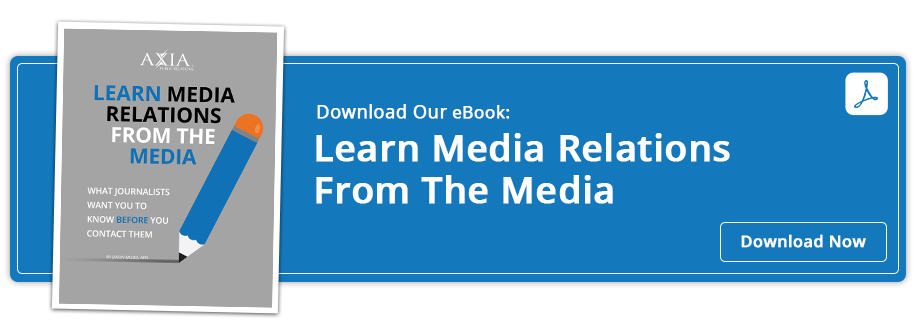Journalists are gearing up for a stronger year in the post-COVID-19 era
 With the world returning to normalcy, journalists are coming to terms with the realities of a post-pandemic industry. After the pandemic compelled them to take a step back and restrategize at the initial stage of the outbreak, it’s yet again necessary for journalists to modify their work habits and preferences to suit the times.
With the world returning to normalcy, journalists are coming to terms with the realities of a post-pandemic industry. After the pandemic compelled them to take a step back and restrategize at the initial stage of the outbreak, it’s yet again necessary for journalists to modify their work habits and preferences to suit the times.
Audio: Listen to this article.
Muck Rack’s “State of Journalism in 2022” study has some interesting insights on the prevalent practices in the industry with the virus’s threat dissipating and the industry bouncing back.
News sources and social media
In terms of where they go first for their news, about 75% of journalists turn to online newspapers and magazines or Twitter, according to the Muck Rack study. However, fewer than 2% refer to LinkedIn and TikTok for news.
Surprisingly, 24% of journalists consider LinkedIn the most valuable social platform. But Twitter takes the lead with 77% of journalists considering it the most valuable social network, while Facebook follows closely behind with 39% of journalists giving it their vote. Snapchat appears to be the least valuable of the options surveyed, as only 1% of the journalists regard it as their most valuable social network.
Thirty-nine percent of journalists plan to spend more time on Twitter this year, and 50% of them will maintain their use of YouTube. Thirty-three percent of them plan to use Facebook less, and 58% neither use nor plan to use TikTok this year.
When reporting on a company, 60% of journalists consult the company’s social media – 58% did so in 2021 – while 15% of journalists disagree with the practice to some degree.
As opposed to 62% in 2021, 64% of journalists this year track how many times their stories are shared on social media, while the rest don’t measure the coverage. Also, 71% of the journalists surveyed agree that a connection to a trending issue makes a story shareable.
Sixty-five percent of them think if the story contains an image or infographic, it’ll make it shareable, and only 25% of the journalists agree that a video in the story will trigger the same effect.
Event coverage in 2022
With COVID-19’s chaos on the back burner, 53% of the journalists surveyed plan to attend more in-person events in 2022. Of the journalists covering politics and government, fashion and beauty, and sports, 54%, 55%, and 56% plan to attend more in-person events in 2022, respectively. But 19% of journalists each in the tech and telecommunications industry and automotive industry said they’ll attend fewer events in person.
An event going virtual doesn’t seem to be a big deal, as 46% of journalists say it doesn’t affect their likelihood of covering it. However, 21% say they’re less likely to cover a virtual event. Sixty-two percent of the surveyed journalists prefer Zoom for virtual events.
Media relations
Companies are improving the ways they share information, which is reflected in the 55% of journalists surveyed who say the current ways most brands share information with the media are not outdated.
Sixty percent of the journalists regard their relationship with PR pros as mutually beneficial. However, they don’t quite consider the association a partnership – only 8% of them consider it such. Sixteen percent of the journalists see the relationship as a necessary evil.
Pitches
Fifty-nine percent of the journalists surveyed say they are just as likely as they were last year to respond to pitches, while 23% of them are more likely to respond. This year, 18% of them are less likely than they were last year to respond to pitches. Bad timing is the leading reason why journalists instantly reject pitches – the reason 24% of the time. Following closely are the lack of personalization and confusing subjects line at 22% and 15%, respectively. Twenty-three percent of the journalists surveyed immediately rejected pitches for a reason Muck Rack did not list.
As for the channels for pitching, 94% of them prefer one-to-one email. Seventeen percent are fine with mass email, while 15% are comfortable with pitches via phone. During the workweek, the earlier the pitches come, the better. Also, 67% prefer to receive pitches in the morning, with 34% preferring to receive them between 5 a.m. and 9 a.m. and 33% preferring between 9 a.m. and noon. Only 5% prefer receiving pitches in the evening, from 6 p.m. to 11 p.m.
On an average business day, 50% of the journalists surveyed receive one to five pitches, and 19% receive six to 10.
Only 10% of the journalists surveyed publish eight to 10 stories in a week. Anywhere from one to seven stories in a week works for 63% of the journalists.
It turns out that 80% of the journalists say a quarter or more of their stories originate from pitches. Additionally, it seems that most journalists prefer concision as 68% of them prefer pitches with fewer than 200 words. When it comes to follow-up emails, 90% of the journalists surveyed agree that at least one follow-up email is acceptable, and 85% of them are OK with follow-up within a week of the initial email.
Journalism in 2022 has evolved from what it was in 2020 and 2021. For a clearer comparison, read our post on how the pandemic transformed journalism in 2021.
 Clients love Marjorie’s work ethic, speed and diligence. She has worked with Axia Public Relations since October 2011. Marjorie graduated from Rockhurst University with a Bachelor of Arts in communication and loves to cheer for her hometown Kansas City Royals. Learn more about Marjorie.
Clients love Marjorie’s work ethic, speed and diligence. She has worked with Axia Public Relations since October 2011. Marjorie graduated from Rockhurst University with a Bachelor of Arts in communication and loves to cheer for her hometown Kansas City Royals. Learn more about Marjorie.
Photo by brotiN biswaS from Pexels
Topics: media relations, earned media, news media


Comment on This Article